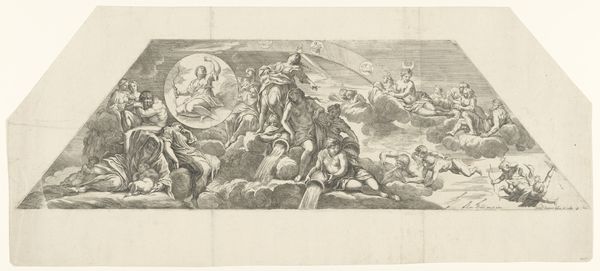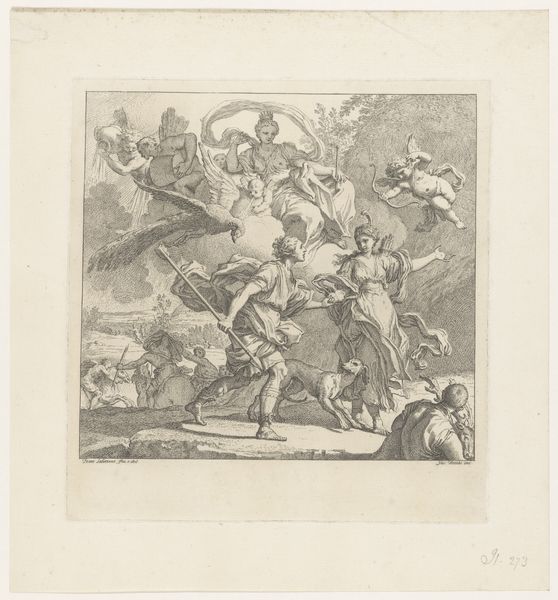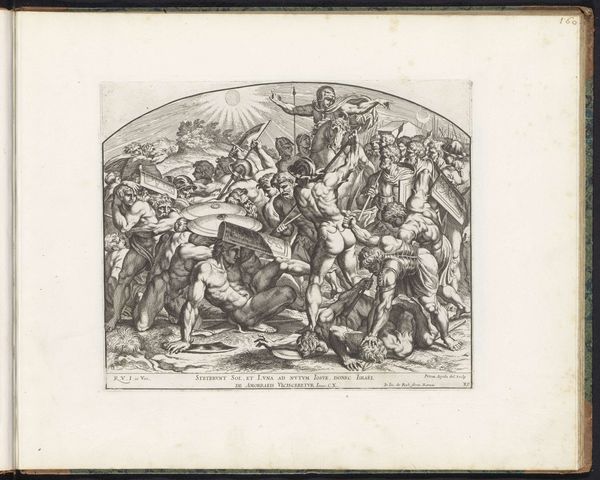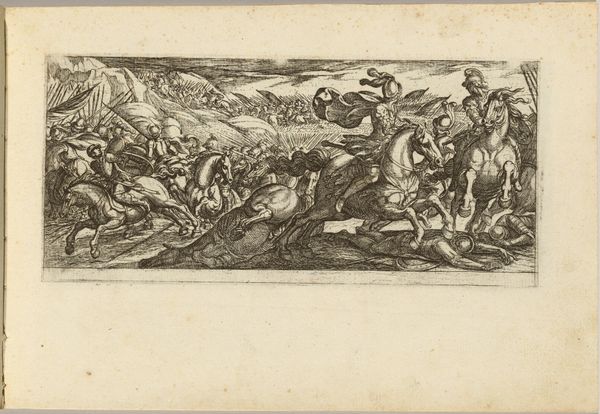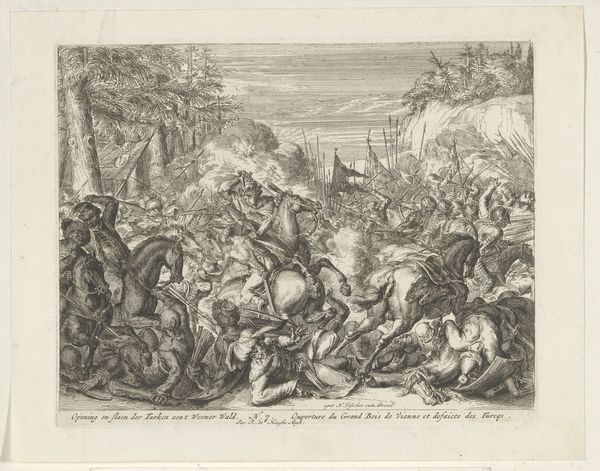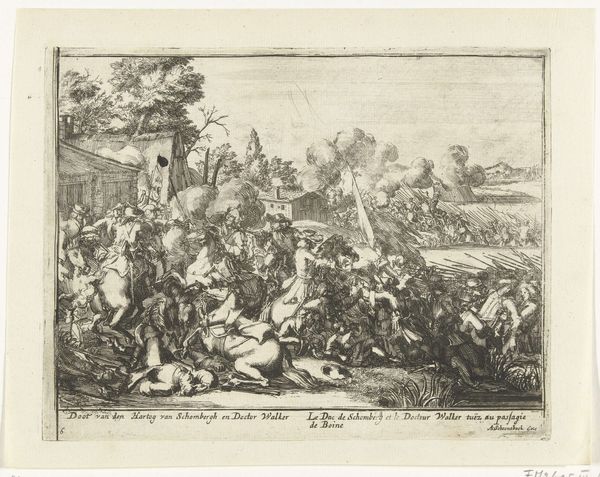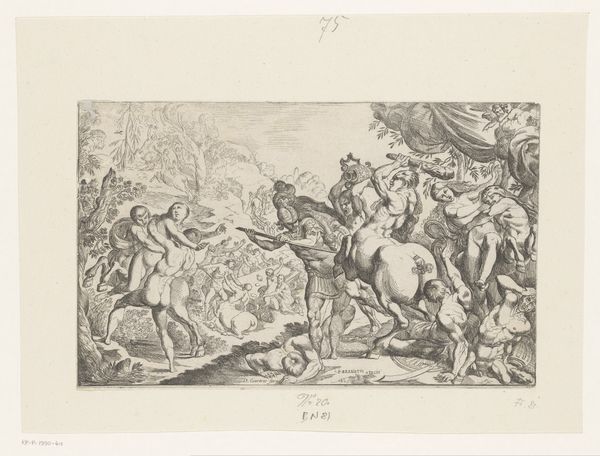
print, etching
#
narrative-art
#
baroque
# print
#
etching
#
old engraving style
#
figuration
#
line
#
pencil work
#
history-painting
Dimensions: height 107 mm, width 142 mm
Copyright: Rijks Museum: Open Domain
Curator: Here at the Rijksmuseum, we have “Russen in een veldslag,” or “Russians in a Battlefield,” an etching by Johann Wilhelm Baur from 1633. Editor: Immediately, it strikes me as chaos held together by line work. Like a frantic sketch barely containing all the action within it. The sky, the clouds look almost peaceful above the violence. Curator: Yes, Baur captures that Baroque tension brilliantly, that play between dynamism and detail. The title at the top in Latin reads 'Bataglia de Moschouti', or Battle of Muscovites, so that chaotic clash represents the Russo-Polish War in the early 17th century, specifically involving Moscow. Editor: The figure on horseback is really impactful here; I immediately see him as a symbol of authority. What is especially interesting, given that he's seemingly being overwhelmed. He becomes a poignant reminder of fleeting power. Curator: Absolutely, you see a power that feels so immediate and tactile. And the choice of etching underscores the themes present. A style from centuries ago feels oddly suited to depicting the war which saw power transition across borders. It also fits a Northern European taste in clarity over bombast. Editor: The image is so small, but so impactful with these figures and their struggles. What feelings and stories must it have prompted in its time? Especially, because war can take on such mythological importance, so the use of symbolism probably reflected specific contemporary politics and viewpoints? Curator: Without a doubt, it speaks volumes through its visual language about that cultural and historical moment. It provides this amazing depth, that goes well beyond what you expect on first impression of such a tiny print. The work pulls you into a whole conversation, not just about conflict, but the transmission and interpretation of meaning across time. Editor: To me, its crude strokes capture not glory, but human mess. But its historical relevance speaks volumes about symbolism as its intended means. How times change. It makes me realize my subjective feelings looking back from centuries apart.
Comments
No comments
Be the first to comment and join the conversation on the ultimate creative platform.

